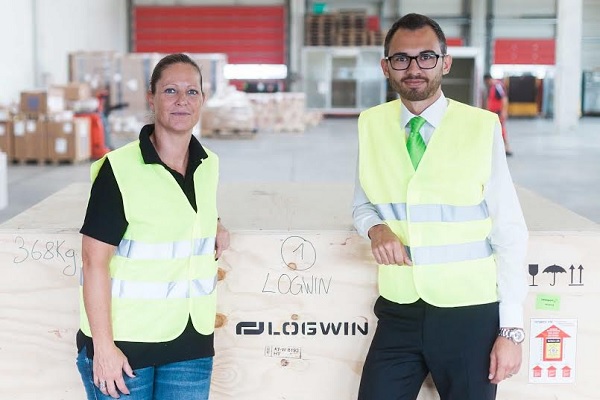
Logwin transports, headquartered in Grevenmacher, today announced its recent collaboration with the University of Vienna in the transportation a new form of loudspeaker used to detect low-frequency communication between elephants.
Elephants use acoustic signals, inaudible to the human ear, to communicate over great distances. For the purpose of sending out similar low-frequency sounds to gauge the subsequent reactions of elephants at the Addo Elephant National Park in South Africa, the University of Vienna built a special supersize loudspeaker- Logwin recently transported the equipment, which is highly sensitive and therefore required significant protective measures for the journey, over several legs by both truck and aircraft.
The project was led by biologists and animal communications researchers Dr. Angela Stöger and PhD student Anton Baotic, the latter being in charge of the transport arrangements for the oversized equipment. The special loudspeaker was reportedly too large for simple parcel shipment and Baotic had to turn to service providers who could aid him in transporting the equipment to South Africa. The services of logistics and transport solutions provider Logwin AG were ultimately employed in achieving this task, collaborating with the scientist to develop a transport plan. The loudspeaker was taken as air freight from Vienna to Port Elizabeth, before continuing its journey by lorry to the national park. However, the loudspeaker had to make an intermediate stop for protective purposes before it went on board the aircraft.
"It was important from the outset to have good and competent advice," explained Baotic. "My contact at Logwin told me about special transport projects for very large and heavy objects. The fact that Logwin has gathered so much experience with similar projects won me over."
The so-called subwoofer weighs 200 kilograms and measures 1,73 metres along its longest side. However, as Sales Manager Manuel Gramann explained, it was not necessarily the size or weight of the loudspeaker which was of concern in its relocation but rather its high sensitivity. "It mustn't be turned on its head or exposed to excessive vibration," reported Gramann.
The loudspeaker was therefore first taken to a packaging company, where it was inserted into a special custom-fit wooden case. A protection device was fitted to the exterior to allow checks on whether the equipment had been handled as instructed, with a red signal in the indicator field signifying if this was not the case. Further measures, including close contact with the airline prior to departure and a familiarity with the protection requirements from people on the ground, were also put in place.
Besides the loudspeaker, Logwin also transported extra technical equipment such as amplifier and cabling, which added around 70 kilograms to the total weight. Logwin transported the entire shipment from the packaging firm to Vienna Airport, from where it continued its journey to Port Elizabeth as air freight. The loudspeaker's status as equipment for scientific purposes allowed it to be exempt from customs inspections. Logwin's office in South Africa then received the consignment at Port Elizabeth Airport and arranged all further handling and onward transport to the national park.
"We are planning to deploy the loudspeaker in the very near future," explained Anton Baotic. "Smooth transport was therefore very important for us. My colleagues and I can now concentrate once more on the actual research project."
The destination of the special loudspeaker was Addo Elephant National Park, 70 kilometers northeast of Port Elizabeth. With a size of 180,000 hectares, it is South Africa's third largest national park and was therefore chosen as the location for the research project into the acoustic communications of elephant bulls, starting at the beginning of August. The animals communicate in the wild over several kilometers using sounds in the infrasound range. These very deep, low-frequency sounds are inaudible to humans. Elephants in the park will be subjected to recordings of fellow elephants emitted by the subwoofer, and the reactions to the different sounds will be documented and subsequently analysed in the cognitive biology laboratory at the University of Vienna. The loudspeaker will make the return journey to Austria after several years of intensive research.
Photo by Logwin (Logwin employees Manuel Gramann, Sales Manager, and Melitta Freil, Airfreight Import)








